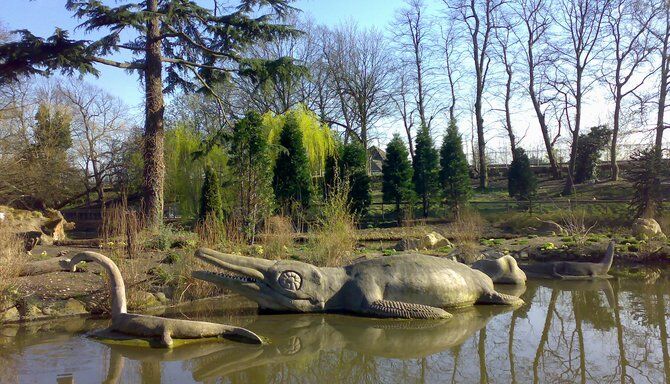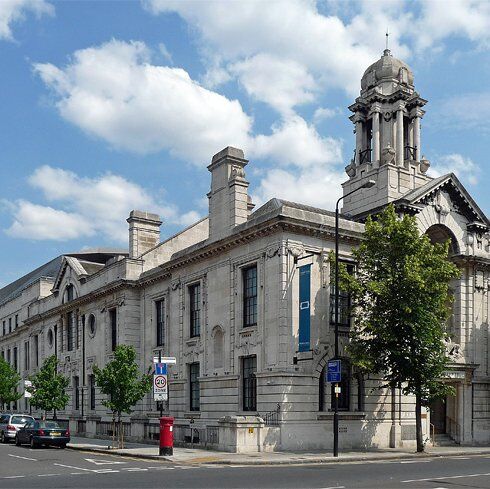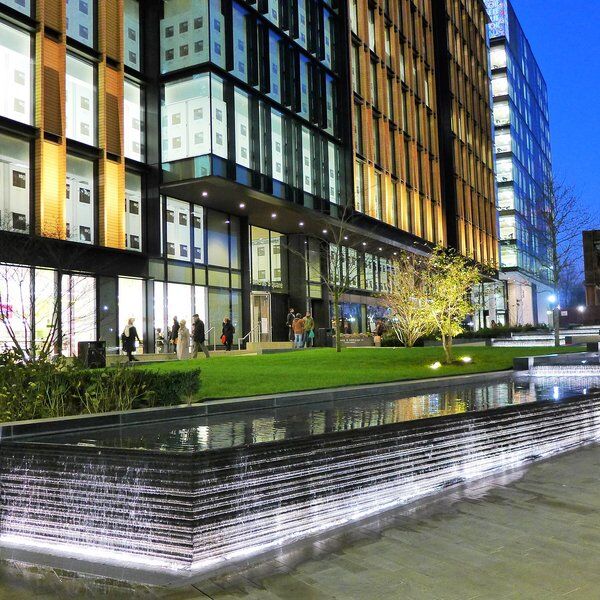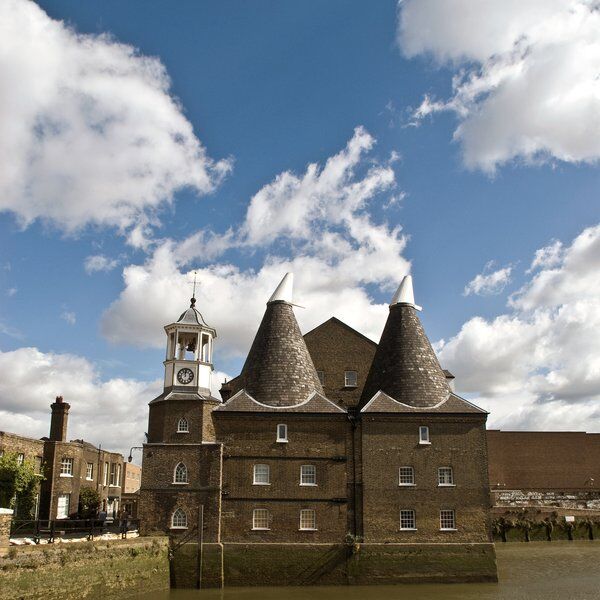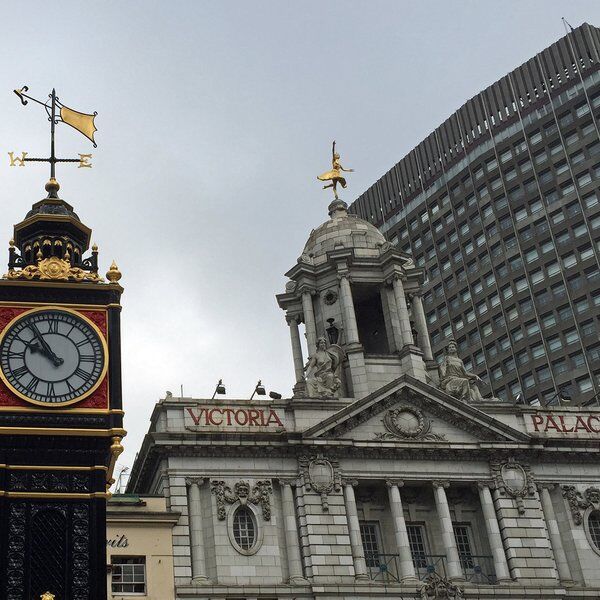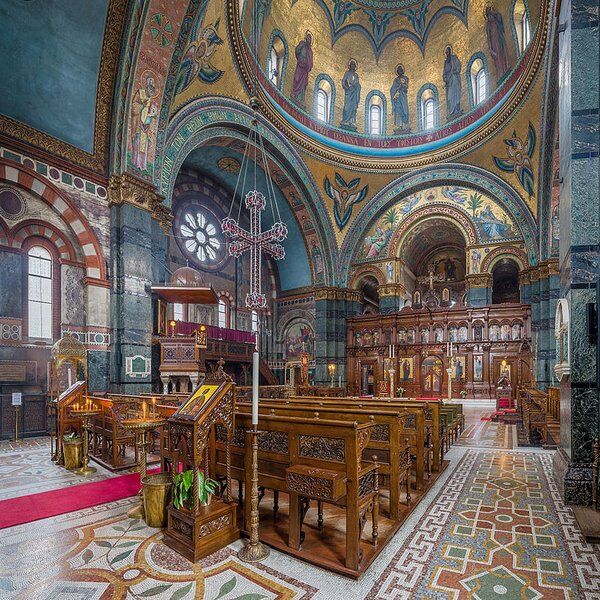Discover the Crystal Palace Park Dinosaurs
As a unique window into Victorian palaeontology, the Crystal Palace Park Dinosaurs are one of London's most intriguing historical landmarks. Situated within the sprawling Crystal Palace Park in the southeast of London, these ancient sculptures have stood for over 160 years. Despite being scientifically inaccurate by modern standards, these models provide a glimpse into how early scientists perceived the prehistoric world, making a trip to the park a fascinating thing to do in London.
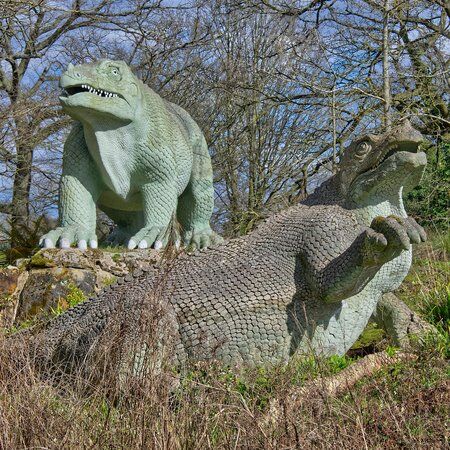
The History of Crystal Palace Park
Originally the grounds of Penge Place mansion, Crystal Palace Park took shape in the mid-19th century, transforming into one of London's largest public parks. The park itself spans several neighbourhoods, including Sydenham, Penge, Anerley, and Upper Norwood, and is managed by the London Borough of Bromley.
The park owes its name to the Crystal Palace, a spectacular glass structure designed by Sir Joseph Paxton. Originally built for the Great Exhibition of 1851 in Hyde Park, the Crystal Palace was relocated to Sydenham Hill in 1854.
Although the iconic glasshouse tragically burned down in 1936, visitors can still see remnants of its grandeur in the terraces and sphinx statues that remain. However, the park’s most enduring legacy lies in its collection of prehistoric dinosaur sculptures, commissioned to accompany the grand reopening of the relocated Crystal Palace.
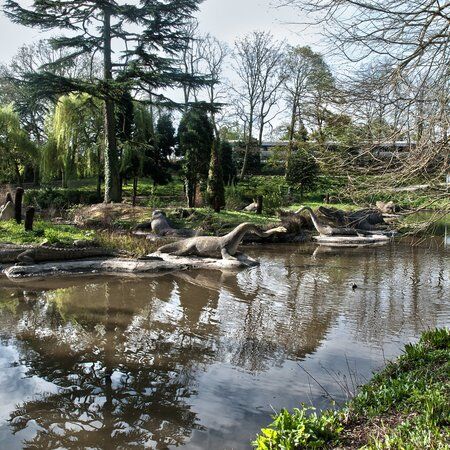
The Birth of the Crystal Palace Park Dinosaurs
In 1852, an ambitious project was launched to create the world’s first life-sized models of extinct animals. Though Sir Richard Owen, one of the leading anatomists of the time, is often credited with the scientific direction of the dinosaur project, much of the intellectual and creative effort behind the sculptures belonged to Benjamin Waterhouse Hawkins.
Hawkins was a natural history artist and sculptor who masterminded the project and worked closely with experts like Owen. He made countless interpretive decisions—everything from the texture of the dinosaurs’ skin to their posture and facial expressions. These decisions were based on the best available knowledge of the time.
A Park with a Mission
The Crystal Palace Park Dinosaurs were more than just decorative art. Unveiled in 1854, the colossal sculptures were intended to educate the public on the latest paleontological discoveries. The models depicted animals from the Mesozoic and Cenozoic eras, including dinosaurs, ichthyosaurs, plesiosaurs, and early mammals.
They were set in a landscape that featured artificial cliffs and rock formations intended to represent different geological periods. This arrangement allowed visitors to walk through "time" as they explored the park, learning about Earth's history through visual storytelling.
The concept of creating life-sized models of extinct animals had never been attempted before, and the park quickly became a popular attraction. Queen Victoria and Prince Albert were among the many who were fascinated by the exhibits, visiting the park on multiple occasions.
Disagreements and Inaccuracies
Throughout the sculptures' creation there were many disagreements between the experts, and differing interpretations of fossil evidence meant that some models reflected speculative ideas rather than confirmed facts. For example, the famed Iguanodon is depicted as a bulky quadruped with a horn on its nose, worlds apart from the sleeker creature that palaeontologists recognize today.
Ultimately, in the 1850s dinosaurs were new and mysterious—having only been discovered a few decades earlier—and palaeontology itself was still a nascent field. It was difficult for anyone to imagine what these animals looked like based on scattered bones. Yet Waterhouse Hawkins gave it a go, bringing these ancient creatures to life and marking the beginning of "Dinomania" that continues to this day.
In 2007, the Crystal Palace Dinosaurs were upgraded to Grade I listed status, the highest possible recognition for historic landmarks in the UK. And although the Crystal Palace itself no longer stands and the interpretations were later proven to be incorrect, the park’s dinosaur sculptures remain, celebrated as an essential part of paleontological education.
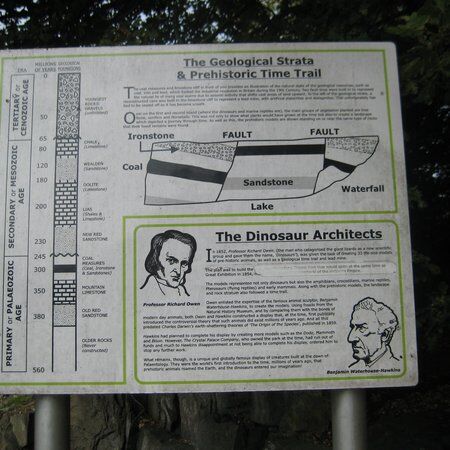
What Creatures are in the Crystal Palace Park?
Crystal Palace Park Dinosaurs
Interestingly, only four of the sculptures in the park are true dinosaurs—the rest are either early amphibians, pterosaurs, or extinct mammals. This broad representation of prehistoric life showcases the evolving understanding of Earth's ancient ecosystems, with models designed to highlight not just the animals but the changes in plant life and environmental conditions throughout history.

The Crystal Palace Park Dinosaurs include four notable dinosaur models: one Megalosaurus, one Hylaeosaurus, and two Iguanodons. Though now known to be scientifically inaccurate, at the time these were the most accurate representations of prehistoric life, based on the limited fossil records and understanding available to 19th-century scientists.
The Lizard-Like Megalosaurus
At the time, little was known about the Megalosaurus; fossil evidence was scarce, with remains mostly consisting of lower jaws and a few limb bones. Waterhouse Hawkins based his depiction on large lizards such as monitor lizards, crafting a creature with a long, crocodile-like head and a bulky, four-legged stance.
Although modern research has revealed that Megalosaurus was a bipedal predator with smaller forelimbs and a deeper skull, the reconstruction was reasonable given the limited data available in the mid-19th century.
Iguanodon: The Inaccurate Dinosaur
One of the most famous of the Crystal Palace dinosaurs is the Iguanodon, whose distinctive spike—originally thought to be a nasal horn—became a hallmark of its early interpretations. This dinosaur was first identified by its iguana-like teeth, which led to the assumption that its body also resembled that of an iguana.
Waterhouse Hawkins sculpted the Iguanodon as a large, four-legged reptile, with the spike mistakenly placed on its nose. It wasn’t until 1878, when more complete Iguanodon fossils were discovered in Belgium, that scientists realised the spikes actually belonged on the dinosaur's hands.
Despite this correction, the Iguanodons in Crystal Palace Park remain in their original, inaccurate form—though their quadrupedal posture does match what we now know about their walking habits, even if for the wrong reasons.
The Spikey Hylaeosaurus
Hylaeosaurus is the least well-known of the Crystal Palace dinosaurs, largely because only a single specimen has ever been found. First described by Gideon Mantell in 1832, this armoured dinosaur was reconstructed with rows of spikes running along its back. In reality, these spikes and plates were likely distributed across its body.
Waterhouse Hawkins’s model of Hylaeosaurus is notable for its positioning—facing away from park visitors. This may have been a creative decision made to compensate for the lack of skull material available at the time. The spikes and armour plates, however, remain a distinctive and somewhat accurate feature of the dinosaur’s defensive adaptations.
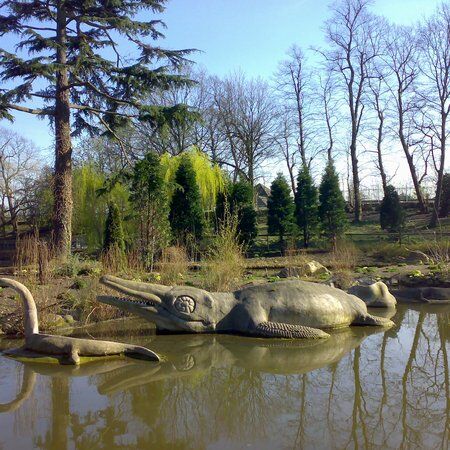
The Accuracy of the Dinosaur Sculptures
While many aspects of the Crystal Palace dinosaurs are scientifically inaccurate by today’s standards, certain details stand the test of time. For instance, the scaly skin of the models is a largely accurate depiction.
Fossil evidence suggests that both Hylaeosaurus and Iguanodon likely had scaly skin, which was typical for reptiles, excluding birds. Though modern science has uncovered many inaccuracies in the dinosaurs' overall anatomy and posture, their scaled appearance aligns with current paleontological understanding.
On the other hand, the colours of these dinosaurs remain speculative. Over the years, the models have been painted in various shades, though no definitive evidence exists to indicate their original hues. The presence of melanosomes, which help determine the colours of feathers in some species, has been found in scaly skin, but the specific colours are unclear.
Other Prehistoric Creatures in Crystal Palace Park
The dinosaur sculptures are not the only prehistoric models in Crystal Palace Park. The collection includes marine reptiles such as plesiosaurs and ichthyosaurs, discovered by Mary Anning in Lyme Regis, and extinct mammals like the Megatherium, a giant ground sloth brought back to Britain by Charles Darwin during his voyage on HMS Beagle.
These sculptures represent animals from various geological eras, including the Palaeozoic, Mesozoic, and Cenozoic periods. This broad representation of prehistoric life showcases the evolving understanding of Earth's ancient ecosystems, with models designed to highlight not just the animals but the changes in plant life and environmental conditions throughout history.

The Friends of Crystal Palace Park Dinosaurs
The Friends of Crystal Palace Dinosaurs is a charitable organisation founded in 2013 to preserve the historic dinosaur sculptures at Crystal Palace Park. The artwork has faced significant challenges due to weathering and decay, as they are made from early forms of concrete and mortar.
While major conservation work was completed in 2002, the dinosaurs were placed on Historic England’s 'At Risk' register in 2020, highlighting the importance of continued preservation. The Friends have addressed these concerns through their restorative work on nine sculptures. However, work is still required on 21 others. They also intend to recreate the prehistoric landscapes these dinosaurs once inhabited, planting species like ferns, ginkgos, and cycads to enhance the historical accuracy and immersive experience for visitors.
Crystal Palace Park Dinosaurs: Inspiring Literature
Since their unveiling in 1854, the Crystal Palace Park Dinosaurs have inspired London’s cultural and literary imagination. Charles Dickens was among the first to reference these prehistoric creatures, depicting a Megalosaurus lumbering through the streets of London in Bleak House (1853), highlighting the Victorian fascination with dinosaurs and their connection to the city.
This fascination was further touched upon through authors like H.G. Wells, who included the dinosaurs in his novel Kipps (1905), and E. Nesbit, who brought them to life in her children’s book The Enchanted Castle (1907).
Throughout the 20th century other authors took inspiration from the statues. Paul Theroux featured a visit to the statues as a pivotal moment in his My Secret History (1989) and Penelope Lively’s Fanny and the Monsters (1991) captured a young girl’s wonder at these ancient sculptures.
Visiting Crystal Palace Park Dinosaurs
Crystal Palace Park is easily accessible by public transport. Crystal Palace Station, a short walk from the park, is served by London Overground and National Rail, making it a convenient day out from anywhere in the city.
The park is free to enter, and the dinosaurs, scattered around the lake, are open for visitors to enjoy year-round. While weekends tend to be busier, with families exploring the park, weekdays offer a quieter experience.
While the dinosaurs can be enjoyed independently, Friends of Crystal Palace Dinosaurs and other organisations occasionally offer guided tours, shedding light on the Victorian fascination with prehistoric creatures and the sculptures’ ongoing conservation efforts.
Things to Do at Crystal Palace Park
A visit to the Crystal Palace Dinosaurs offers more than just a glimpse into Victorian interpretations of prehistoric life. The park itself is a historic site with plenty to explore:
- Explore the Dinosaur Trail: The Dinosaur Court, featuring over 30 sculptures, is the centrepiece. Wander around the lake to see these incredible creatures up close, read about their history, and admire their surprising level of detail.
- Capel Manor City Farm: Located within the park, the farm is home to an array of animals, including Shetland ponies, goats, pigs, and more.
- The Crystal Palace Museum: Dive into the history of the park and the Great Exhibition at this small but fascinating museum. Open on weekends, it provides information on the site and how it became the home of the dinosaurs.
- The Boating Lake: For those visiting between Easter and October, you can rent pedal boats and enjoy the scenic views of the park from the lake, with the dinosaurs visible in the distance.
- The Concert Bowl: Affectionately known as "the Rusty Laptop," this structure has hosted legendary acts such as Bob Marley and Pink Floyd.
To read about other incredible sculpture parks around the world, click here: Olympic Sculpture Park - Seattle and here: Eclectic Menagerie Park - Houston.
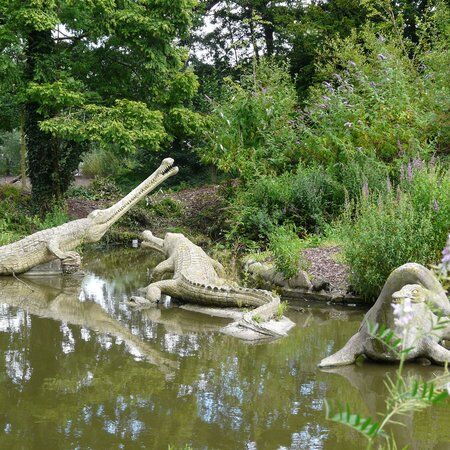
Go Beyond the Crystal Palace Dinosaurs with CityDays
While the Crystal Palace Dinosaurs are a must-see, London is brimming with other hidden gems and fascinating historical landmarks.
The best way to discover more things to do in London is to take your time and, ideally, have a pre-planned route that takes you past all the noteworthy nooks and hidden gems.
We can help you there!
The City combines the fun of an outdoor treasure hunt with the historic facts and whimsical trivia of a walking tour.
Answer riddles, solve puzzles and learn more about London’s 2000-year-old history in a new and interactive way!
Take the stress out of planning your visit to London and book your adventure today!
Not visiting London this time? Don’t worry, you’ll find us all over the world.
